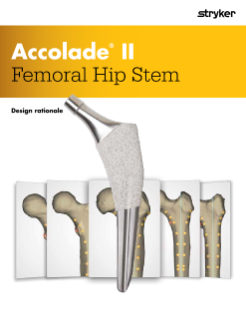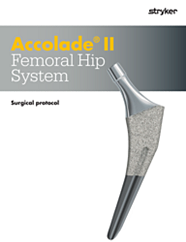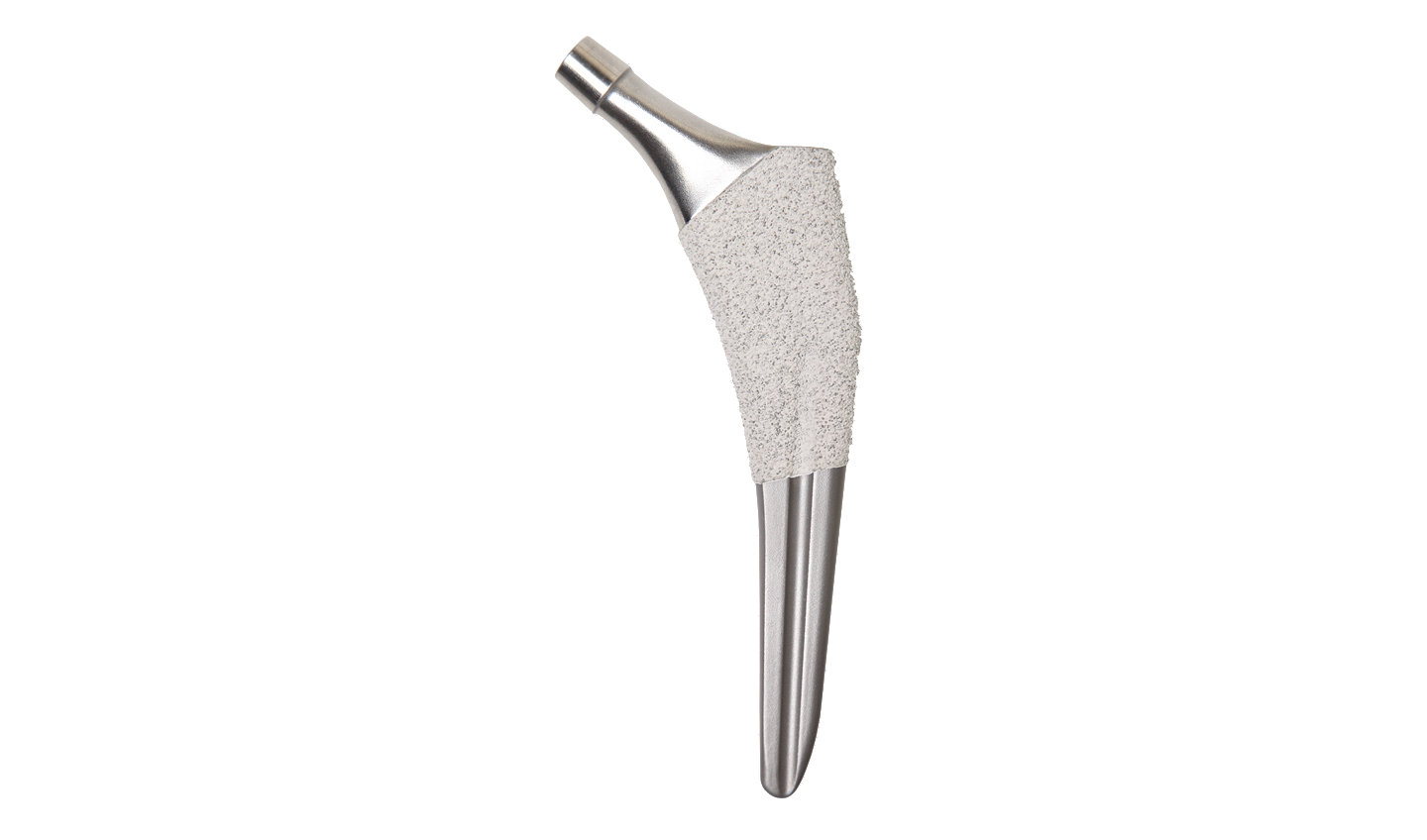
Accolade II
Designed to fit more patients, designed to fit your approach
Accolade II’s Morphometric Wedge is designed to address modern demands with novel technology by evolving conventional tapered wedge femoral stem design with size specific medial curvature to more closely fit a broad range of bone sizes and shapes of today’s patient population.1
Stryker Orthopaedic Modeling and Analytics (SOMA)
Stryker Orthopaedic Modeling and Analytics, or SOMA, is a system that enables population-based design and has powerful functionality with which to design, model, and analyze novel orthopaedic devices. Stryker utilized SOMA technology to design a novel stem building upon the conventional tapered wedge femoral design, incorporating features to allow for an enhanced implant fit in today’s patient population.3
By establishing an increased canal fit and fill3, Accolade II has been shown to allow for enhanced stability3, decreased intraoperative femoral fractures5, as well as survivorship and functional outcomes6,7, which may lead to satisfied patients.7,8 An illustrated look at the process by which SOMA technology is employed in implant design is described below.
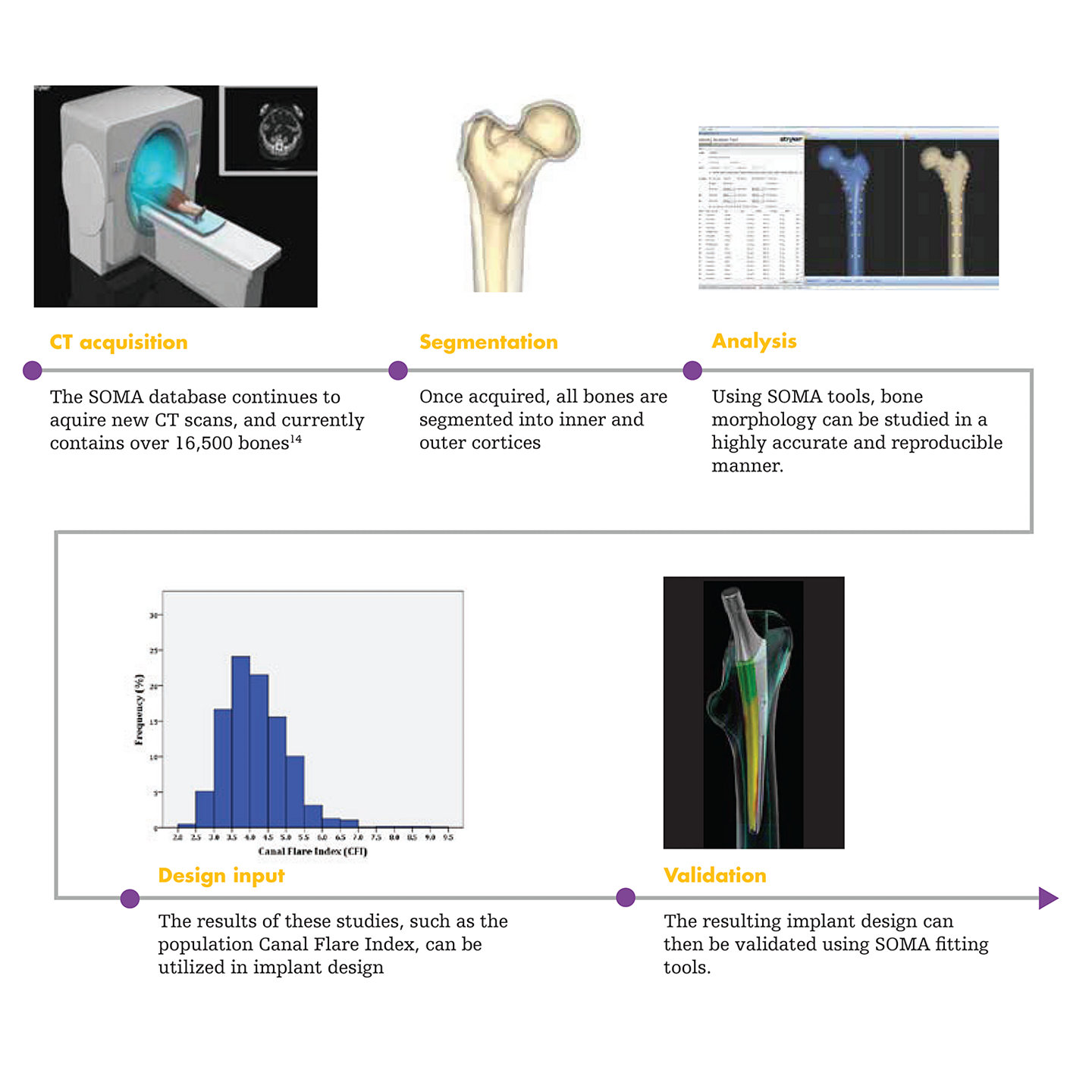
Key benefits
- Offers increasing proximal conformity to enhance primary stability.8,9
- Initial stability may be increased by creating a higher conformity between the implant and the femoral cortices, leading to a larger area of contract.10

- Distal-only engaged femoral stems can experience stress shielding10 and consequently may lead to elevated failure rates due to loosening and migration.3 In order to better mimic the femoral anatomy and avoid distal-only engagement, a more anatomic implant growth rate is needed.
- Utilizing the SOMA femoral morphology study, a more anthropomorphic proximal-distal stem growth rate was identified. This rate led to enhanced implant proportions6, as the distal geometry of Accolade II increases in size less than the proximal geometry.
- These proportions enable Accolade II to achieve a significantly better canal fit and fill3, and Accolade II has shown a decreased incidence of distal-only engagement.3
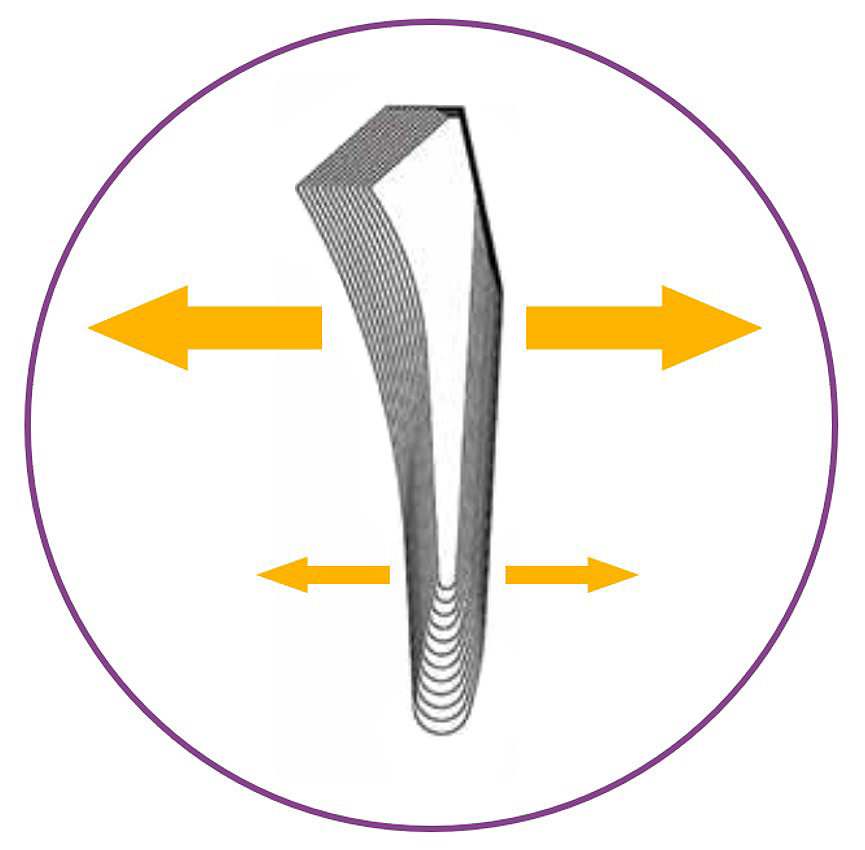
- There exists a complex relationship between stem length and implant stability.11 Shortening stem length without geometry optimization has been shown to increase the potential for micromotion11, which is a strong indicator for implant failure.12
- Accolade II utilized the SOMA database and stability analyses to establish an optimized length for each stem size which not only accommodates muscle-sparing approaches11, but demonstrated improved initial stability.4
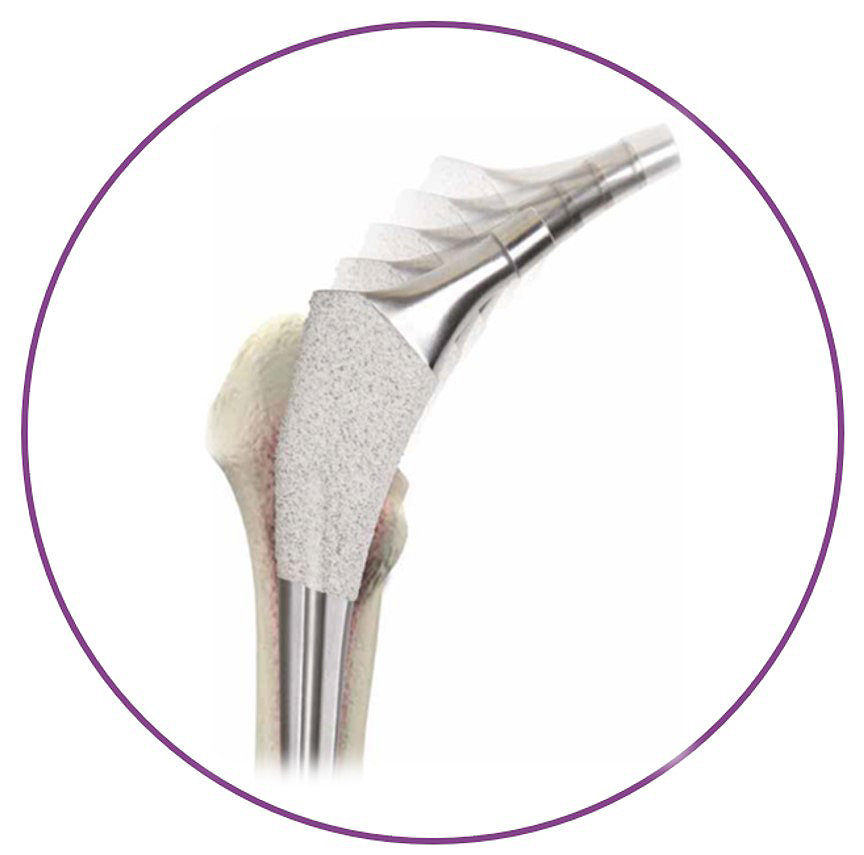
- Muscle-sparing surgical approaches continue to gain popularity, due to the potential patient benefits of faster recovery13,14, less pain13,14 and greater satisfaction.15
- Stryker’s portfolio of muscle-sparing techniques features modern instrumentation and dynamic Medical Education programs to support the Direct Anterior Reconstructive Technology (DART™) and the Direct Superior Approach.
- Stryker developed a training platform to help surgeons during the learning curve of a new surgical approach, Stryker’s Training Academy. For access to Stryker’s Training Academy, contact your local Stryker sales representative.
Attend a medical education event today!
If you are interested in attending one of these courses to learn more about Accolade II, contact your Stryker Joint Replacement Representative using the form below:
- Wuestemann T, Bastian A, Parvizi J, Nessler J, Kolisek F. A novel tapered hip stem design optimized for femoral fit in a wide array of bone types. 2011 EFFORT.
- Boucher, F. et al. Preclinical Finite Element Analysis of a Novel Tapered Wedge Stem Optimized for Stability at a Reduced Length. 2011 EFORT Poster Presentation.
- Issa, K et al. Radiographic Fit and Fill Analysis of a New Second-Generation Proximally Coated Cementless Stem Compared to its Predicate Design. Journal of Arthroplasty (2013). http://dx.doi.org/10.1016/j.arth.2013.04.029.
- Collopy, D. et al. A Prospective Roentgen Stereophotogrammetric Analysis (RSA) Study of the Stryker Accolade II Cementless Hipo Stem to 2 Years Post-Surgery. Abstracts from 2016 Annual AOA Meeiting–Cairns, QLD, October 9-13, 2016.
- Bono, J. et al. Total Hip Intraoperative Femur Fracture: Does a Tapered Wedge Design with a Size Specific Medial Curvature Reduce the Incidence of Intraoperative Femur Fracture? Presentation at 47thAnnual EOA Meeting -New Orleans, LA, October 19-22, 2016.
- Pierce T. et al. Second-Generation Versus First-Generation Cementless Tapered Wedge Femoral Stems. Orthopedics. 2015 38(9): 550-554.
- Kolisek, F. et al. Outcomes of Second-Generation Tapered Wedge Design. SurgTechnolInt. 2016 Apr 4; XXVIII. pii: sti28/702.
- Stryker Internal presentation ‘Global Bone Morphology Study-Proximal Femur’. November 10, 2016.
- Narzikul, BS et al. Alternation in Geometry of Femoral Stem Results in Better Fit and Fill: Comparison of Accolade I vs. Accolade II. Presentation at 47th Annual EOA Meeting – New Orleans, LA, October 19-22, 2016.
- Khanuja H, et al. Current Concepts Review: Cementless Femoral Fixation in Total Hip Arthroplasty. J Bone Joint Surg Am. 2011;93:500-9.
- Faizan A, et al, Development and Verification of a Cementless Novel Tapered Wedge Stem for Total Hip Arthroplasty, J Arthroplasty (2014), http://dx.doi.org/10.1016/j.arth.2014.09.023.
- Van der Voort, P. et al. Early subsidence of shape-closed hip arthroplasty stems is associated with late revision, Acta Orthopaedica 2015 86:5, 575-585, DOI: 10.3109/17453674.2015.1043832.
- Restrepo C, Parvizi J, Eslam Pour A, et al. Prospective Randomized Study of Two Surgical Approaches for Total Hip Arthroplasty. The Journal of Arhtroplasty 2010; 25: 671-670.
- Vail T, Mariani E, Bourne M, Berger R, Meneghini M. Approaches in Primary Total Hip Arthroplasty. J Bone Joint Surgery 2009; 91:10.
- M.W. Zawadsky et al./ Early Outcome Comparison Between the Direct Anterior Approach and the Mini-Incision Posterior Approach for Primary Total Hip Arthroplasty: 150 Consecutive Cases, The Journal of Arthroplasty 29 (2014) 1256-126.
- Internal Sales Data (2022).
ACCII-WC-7_34335






